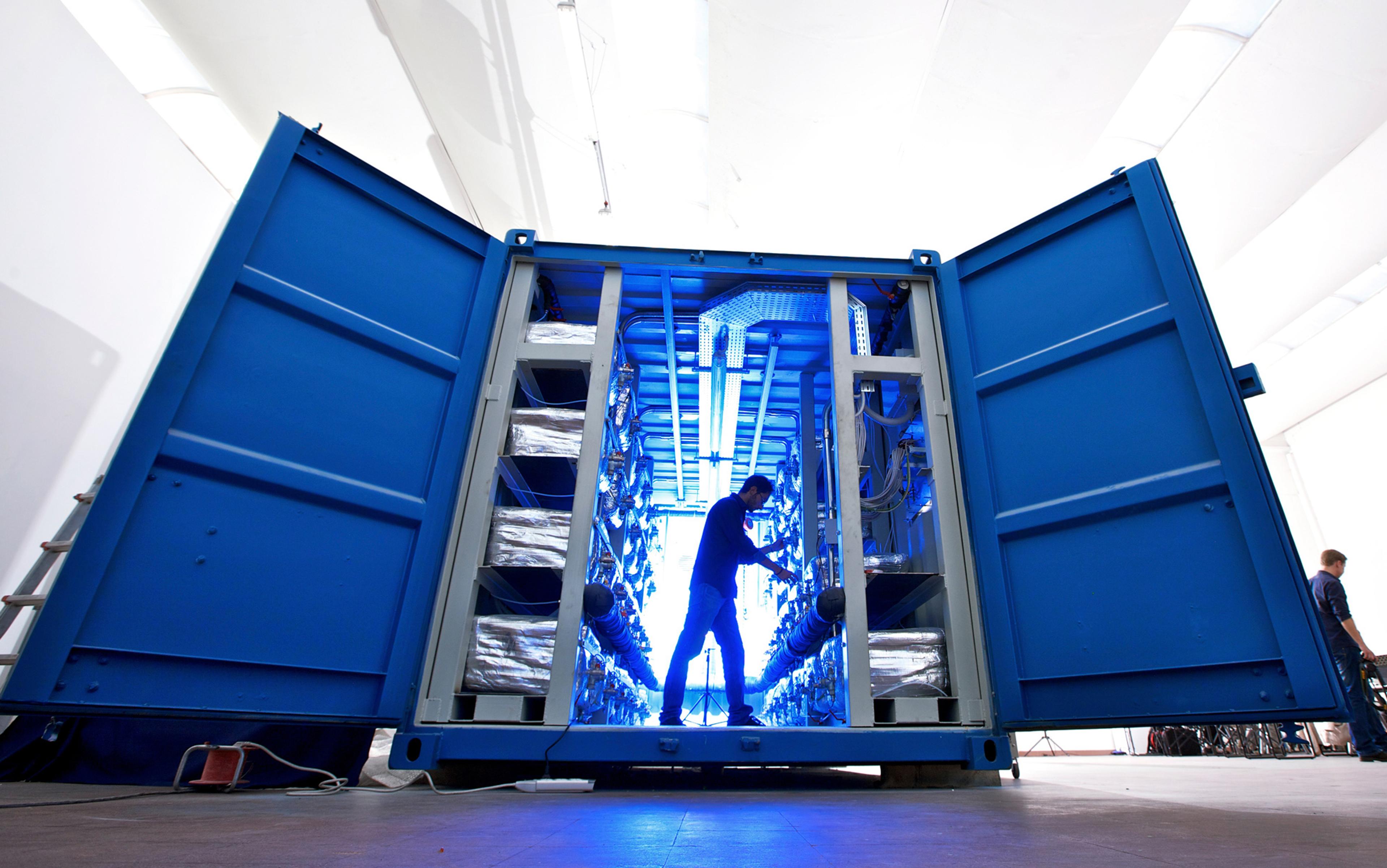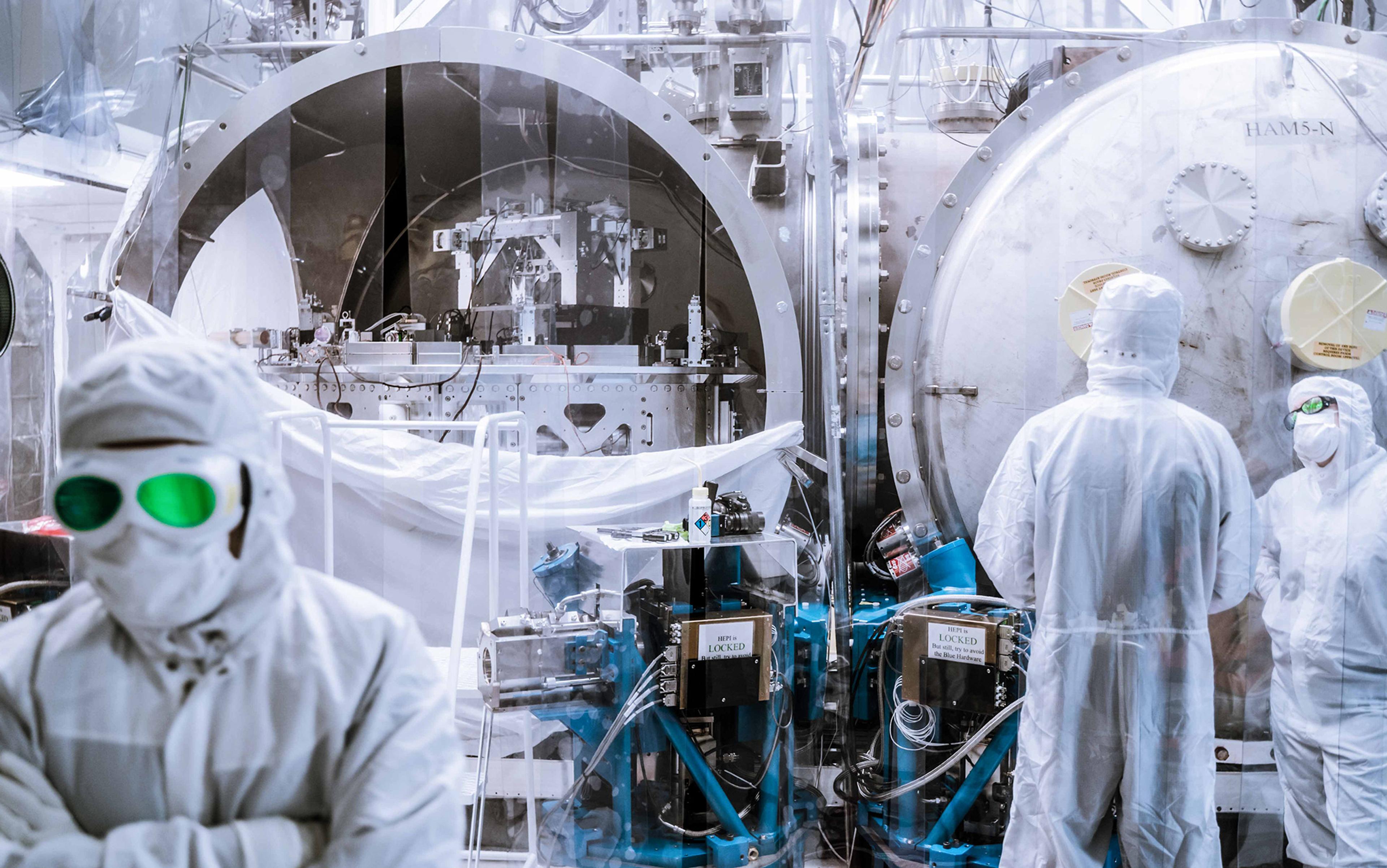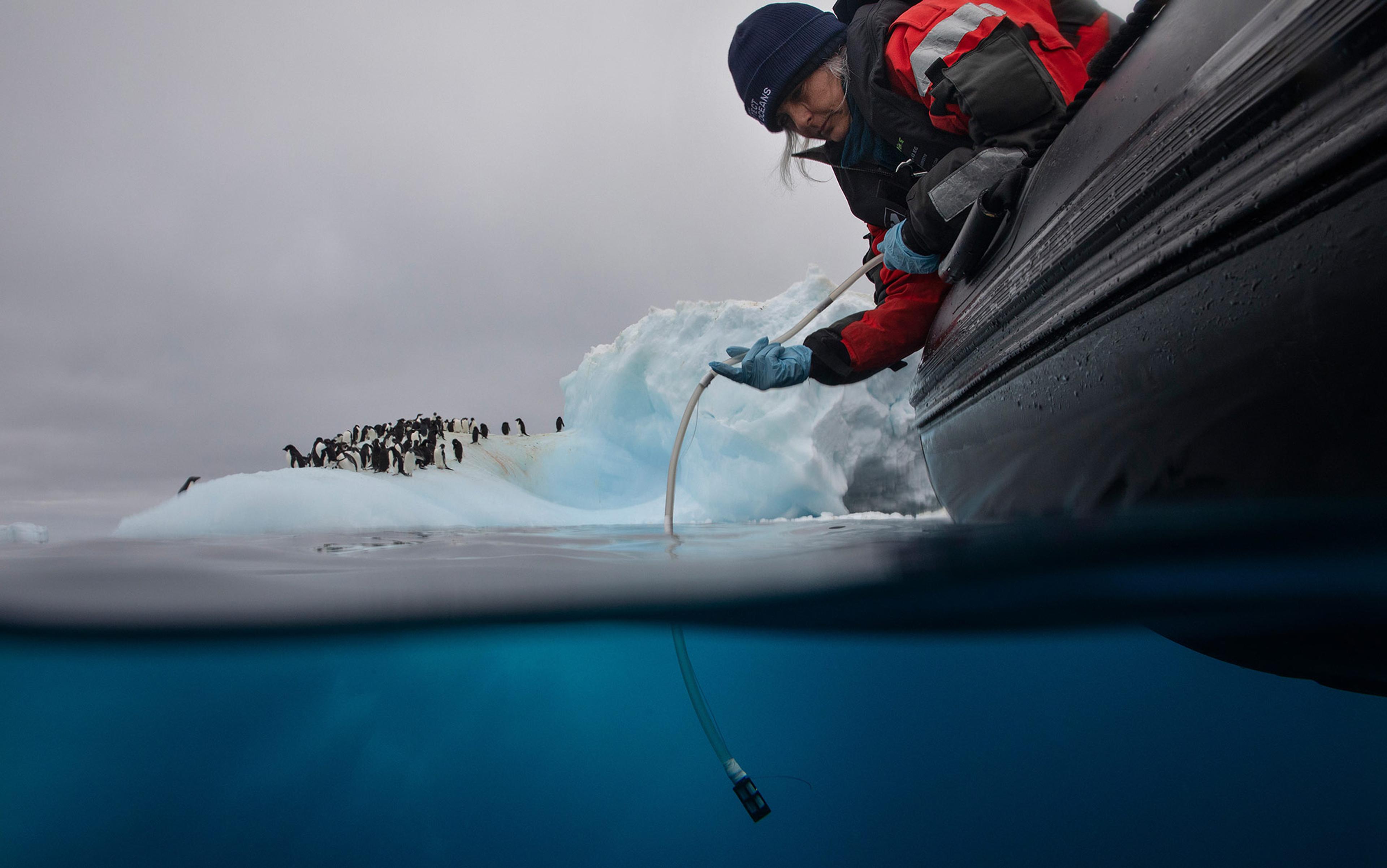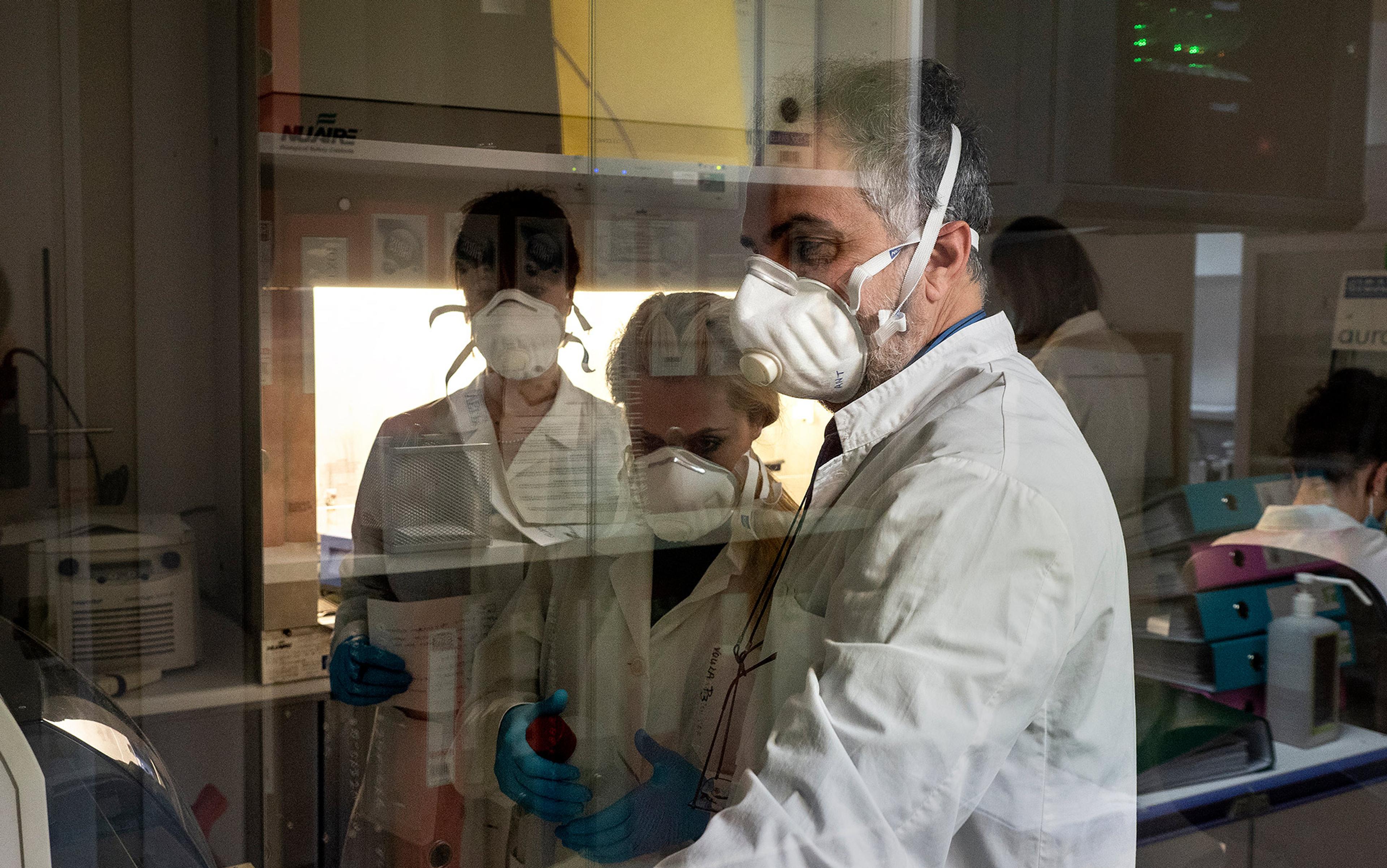A few years ago, a physicist friend of mine made a joke on Facebook about the laws of physics being broken in Italy. He had two pieces of news in mind. One was a claim by a team at the Oscillation Project with Emulsion-tRacking Apparatus (OPERA) in Gran Sasso, who said they’d discovered superluminal neutrinos. The other concerned Andrea Rossi, an engineer from Bologna, who claimed to have a cold fusion reactor producing commercially useful amounts of heat.
Why were these claims so improbable? The neutrinos challenged a fundamental principle of Albert Einstein’s theory of special relativity, which says that nothing can travel faster than light. Meanwhile cold fusion (or LENR, for ‘low-energy nuclear reaction’) is the controversial idea that nuclear reactions similar to those in the Sun could, under certain conditions, also occur close to room temperature.
The latter was popularised in 1989 by Martin Fleischmann and Stanley Pons, who claimed to have found evidence that such processes could take place in palladium loaded with deuterium (an isotope of hydrogen). A few other physicists, including the late Sergio Focardi at Bologna, claimed similar effects with nickel and ordinary hydrogen. But most were highly skeptical, and the field subsequently gained, as Wikipedia puts it, ‘a reputation as pathological science’.
It turned out that my physicist friend and I disagreed about which of these unlikely claims was most credible. He thought it was the neutrinos, because the work had been done by respectable scientists rather than a lone engineer with a somewhat chequered past. I favoured Rossi, on grounds of the physics. Superluminal neutrinos would overturn a fundamental tenet of relativity, but all Rossi needed was a previously unnoticed channel to a reservoir of energy whose existence is not in doubt. We know that huge amounts of energy are locked up in metastable nuclear configurations, trapped like water behind a dam. There’s no known way to get useful access to it at low temperatures. But – so far as I knew – there was no ‘watertight’ argument that such methods were impossible.
My friend agreed with me about the physics. (So has every other physicist I’ve asked about it since.) But he still put more weight on the sociological factors – reputation, as it were. So we agreed to bet a dinner on the issue. My friend would pay if Rossi turned out to have something genuine, and I would pay if the neutrinos came up trumps. We’d split the bill if, as then seemed highly likely, both claims turned out to be false.
It soon became clear that I wasn’t going to lose. The neutrinos were scratched from the race, when it became apparent that someone on OPERA’s team of respectable scientists had failed to tighten an optical lead correctly.
Rossi, however, has been going from strength to strength. While it is fair to say that the jury is still out, there has been a lot of good news for my hopes of a free dinner in the past couple of years. There were two reports (in 2013 and 2014) on tests of Rossi’s device by teams of Swedish and Italian physicists whose scientific credentials are not in doubt, and who had access to one of his devices for extended periods (a month for the second test). Both reports claimed levels of excess heat far beyond anything explicable in chemical terms, in the testers’ view. (The second report also claimed isotopic shifts in the composition of the fuel.) Since then, there have been several reports of duplications by experimenters in Russia and China, guided by details in the 2014 report.
More recently, Rossi was granted a US patent for one of his devices, previously refused on the grounds that insufficient evidence had been provided that the technique worked as claimed. There are credible reports that a 1MW version of his device, producing many times the energy that it consumes, has been on trial in an industrial plant in North Carolina for months, with good results so far. And Rossi’s US backer and licensee, Tom Darden – who has a long track record of investment in pollution-reducing industries – has been increasingly willing to speak out in support of the LENR technology field. (Another investor, the UK-based Woodford Funds, reports that it conducted ‘a rigorous due-diligence process that has taken two and half years’.)
Finally, very recently, there’s a paper by two senior Swedish physicists, Rickard Lundin and Hans Lidgren, proposing a mechanism for Rossi’s results, inspired in part by the second of two test reports mentioned above. Lundin and Lidgren say that the ‘experimental results by Rossi and co-workers and their E-Cat reactor provide the best experimental verification’ of the process they propose.
As I say, I don’t claim that this evidence is conclusive, even collectively. It’s still conceivable that there is fraud involved, as many skeptics have claimed; or some large and persistent measurement error. Yet these alternatives are becoming increasingly unlikely. Rossi is not even the only person claiming commercially relevant results from LENR. Another prominent example is Robert Godes, of the California-based Brillouin Energy.
As several people have noticed, a new clean source of energy would be really, really useful right about now
You can see why I’ve been salivating at the thought of my dinner. And it is not only my stomach that has been increasingly preoccupied with this fascinating story. I’m a philosopher of science, and my brain has been finding it engrossing, too.
Imagine that someone had a working hot-fusion reactor in Florida – assembled, as Rossi’s 1MW device is reported to be, in a couple of shipping containers, and producing several hundred kilowatts of excess power, month after month, in apparent safety. That would be huge news. As several people have noticed, a new clean source of energy would be really, really useful right about now.
But if the potential news is this big, why haven’t most of you heard about Rossi, or Godes, or any of the other people who have been working in the area (for many years, in some cases)? This is where, from a philosopher of science’s point of view, things get interesting.
As a question about sociology, the answer is obvious. Cold fusion is dismissed as pseudoscience, the kind of thing that respectable scientists and science journalists simply don’t talk about (unless to remind us of its disgrace). As a recent Fortune piece puts it, the Fleischmann and Pons experiment ‘was eventually debunked and since then the term cold fusion has become almost synonymous with scientific chicanery’. In this case, the author of the article is blithely reproducing the orthodox view, even in the lead-in to his interview with Darden – who tells him a completely different story, and has certainly put his money where his mouth is.
Ever since 1989, in fact, the whole subject has been largely off-limits in mainstream scientific circles. Authors who do put their head above the parapet are ignored or rebuked. Most recently, Lundin and Lidgren reported that they had submitted their paper to the journal Plasma Physics and Controlled Fusion, but that the editors declined to have it reviewed; and that even the non-reviewed preprint archive, arxiv.org, refused to accept it.
So, as a matter of sociology, it is easy to see why Rossi gets little serious attention; why an interview with Darden associates him with scientific chicanery; and why, I hope, some of you are having doubts about me for writing on the subject in a way that indicates that I am prepared to consider it seriously. (If so, hold that attitude. I want to explain why I take it to reflect a pathology in our present version of the scientific method. My task will be easier if you are still suffering from the symptoms.)
Sociology is one thing, but rational explanation another. It is very hard to extract from this history any satisfactory justification for ignoring recent work on LENR. After all, the standard line is that the rejection of cold fusion in 1989 turned on the failure to replicate the claims of Fleischmann and Pons. Yet if that were the real reason, then the rejection would have to be provisional. Failure to replicate couldn’t possibly be more than provisional – empirical science is a fallible business, as any good scientist would acknowledge. In that case, well-performed experiments claiming to overturn the failure to replicate would certainly be of great interest.
What if the failure to replicate wasn’t crucial after all? What if we already knew, on theoretical grounds alone, that cold fusion was impossible? But this would make a nonsense of the fuss over the failure to reproduce Fleischmann and Pons’ findings. And in any case, it is simply not true. As I said at the beginning, what physicists actually say (in my experience) is that although LENR is highly unlikely, we cannot say that it is impossible. We know that the energy is in there, after all.
‘If there is something scientists fear, it is to become like pariahs’
No doubt one could find some physicists who would claim it was impossible. But they might like to recall the case of the great nuclear physicist Lord Rutherford, who claimed in 1933 that ‘anyone who expects a source of power from transformation of… atoms is talking moonshine’ – only days before Leo Szilard, prompted by newspaper reports of Rutherford’s remarks, figured out the principles of the chain reaction that makes nuclear fission useable as an energy source, peaceful or otherwise.
This is not to deny that there is truth in the principle popularised by Carl Sagan, that extraordinary claims require extraordinary evidence. We should certainly be very cautious about such surprising claims, unless and until we amass a great deal of evidence. But this is not a good reason for ignoring such evidence in the first place, or refusing to contemplate the possibility that it might exist. (As Godes said recently: ‘It is sad that such people say that science should be driven by data and results, but at the same time refuse to look at the actual results.’)
Again, there’s a sociological explanation why few people are willing to look at the evidence. They put their reputations at risk by doing so. Cold fusion is tainted, and the taint is contagious – anyone seen to take it seriously risks contamination. So the subject is stuck in a place that is largely inaccessible to reason – a reputation trap, we might call it. People outside the trap won’t go near it, for fear of falling in. ‘If there is something scientists fear, it is to become like pariahs,’ as Lundin puts it. People inside the trap are already regarded as disreputable, an attitude that trumps any efforts that they might make to argue their way out, by reason and evidence.
Outsiders might be surprised to learn how well-populated the trap actually is, in the case of cold fusion and LENR. The field never entirely went away, nor vanished from the laboratories of respected institutions. (Rossi’s own background is not in these laboratories, but he acknowledges that his methods owe much to those who are, or were – especially to the late Sergio Focardi, one of the pioneers of the field.) To anyone willing to listen, the community will say that they have amassed a great deal of evidence of excess heat, not explicable in chemical terms, and of various markers of nuclear processes. Some, including a team at one of Italy’s leading research centres, say that they have many replications of the Fleischmann and Pons results.
Again, the explanation for ignoring these claims cannot be that other attempts failed 25 years ago. That makes no sense at all. Rather, it’s the reputation trap. The results are ignored because they concern cold fusion, which we ‘know’ to be pseudoscience – we know it because attempts to replicate these experiments failed 25 years ago! The reasoning is still entirely circular, but the reputation trap gives its conclusion a convincing mask of respectability. That’s how the trap works.
In a case like this, there is very little cost to a false positive. But there may be a huge cost to a false negative
Fifty years ago, Thomas Kuhn taught us that this is the usual way for science to deal with paradigm-threatening anomalies. The borders of dominant paradigms are often protected by reputation traps, which deter all but the most reckless or brilliant critics. If LENR were an ordinary piece of science (or proposed science), the challenge posed by Rossi and others would promise fascinating spectator sport for philosophers and historians of science – a Kuhnian revolution waiting to happen, perhaps, with threats to the stability of the reputation trap now clearly in view. We could take our seats on the sidelines and wait to see whether walls fall – whether distinguished skeptics end up with egg on their faces. ‘Pleasant is it to behold great encounters of warfare arrayed over the plains, with no part of yours in the peril,’ as Lucretius put it.
This alone would be enough to explain why I’ve been finding Rossi’s apparent progress so stimulating. But there’s more, much more. None of us, not even philosophers, are mere spectators in this case. We all have skin in the game, and parts, indeed a planet, quite seriously in peril. We are like a thirsty town, desperate for a new water supply. What we drink now is slowly killing us. We know that there’s an abundant supply of clean, cheap water, trapped behind the dam. The problem is to find a way to tap it. A couple of engineers thought that they had found a way 25 years ago, but they couldn’t make it work reliably, and the profession turned against them. Since then, there’s been a big reputation cost to any engineer who takes up the issue.
Put this way, it is easy to see an argument that we’ve been shooting ourselves in the foot. In a case like this, there is very little cost to a false positive – to investing some time and money in an avenue that in the end turns out to go nowhere. But there may be a huge cost to a false negative. If Rossi, Godes, Lundin, Lidgren and others do turn out to have something useful – something that can make some useful contribution to meeting our desperate need for clean, cheap energy – we will have wasted a generation of progress. What we should have done instead is to have engineered the exact opposite of a reputation trap – perhaps an X Prize-like reward for the first reliable replication of the Fleischmann and Pons results, above some commercial bar.
At last I can explain what I meant earlier, when I asked you to hold on to the thought that I must be a bit flaky myself, if that was your reaction to my willingness to take cold fusion seriously. If you do think that – at least, if you think it without having studied the evidence for yourself – then your reaction is a symptom of the reputation trap. But now I’ve suggested that the trap itself might be an irrational pathology, in a special case such as this, in which the cost of a false negative is very high. If I’m right, then in a more rational world, we would fix our scientific norms to escape it. In a more rational world, you wouldn’t think I’m flaky.
I don’t need to deny that your reaction is an appropriate one, by the standards of science as we currently practice it, or that those standards work pretty well in general. Reputation traps have a useful purpose in the Kuhnian picture. They help to maintain the stability important to what Kuhn called normal science – the ordinary, useful kind of science when paradigms are not under threat. But this is compatible with the claim that they can be harmful in special cases (of which cold fusion might be one) – and that we could do better if we were better at identifying those cases in advance.
I suspect it’s too late to dismantle the trap for LENR – the horse might already be in the process of bolting. If Rossi and Godes et al are actually on to something, then the field is going to be mainstream soon anyway. But we could try to learn from our mistakes. There might be other potential cases with a similar payoff structure (a high cost for false negatives, with a low cost for false positives). I suspect there are some in the area of emerging extreme risks, another field in which I have some interest.
I’ve met scientists employed as technology forecasters for a very large enterprise, who were frustrated at their inability to persuade their organisation to list LENR as a technology of possible strategic interest, even with low probability. Once again, it was the reputation trap at work. This attitude could be disastrous in other cases, if the ideas stuck in the trap happened to be the key to addressing some potentially catastrophic risk. (Indeed, as my physicist friend rightly points out, it might be disastrous in the case of LENR itself, if it turns out to generate its own extreme risks.)
Darden’s attitude displays the cautious open-mindedness that has been lacking in reactions to the field for most of its history
There are big issues here. Would it be possible to avoid these counterproductive cases of the reputation trap without erring too far in the other direction – without opening the floodgates, so to speak? I’m not sure, but I think it is important to put the question on the table. If LENR does develop in the direction I now think likely, we might be able to salvage something useful from mistakes in this case.
I’ll close with some words from Darden, from a speech at ICCF-19, the international meeting of the LENR community held in Padua, Italy this April. If the field is indeed in the process of digging itself out of the reputation trap, then Darden deserves much of the credit. Either way, his attitude displays the kind of cautious open-mindedness that has been so lacking in reactions to the field for most of its history.
Darden describes how he came to invest in LENR. Until quite recently, he says, he shared the conventional view that ‘the subject was dead’. But several independent enquiries about LENR within a matter of weeks convinced him that there was something worth investigating:
We believed LENR technology was worth pursuing, even if we turn out to be unsuccessful ultimately. We were willing to invest time and resources to see if this might be an area of useful research in our quest to eliminate pollution. At the time, we were not especially optimistic, but the global benefits were compelling.
He reports that things have been going very well. ‘We’ve had some success, and we’re expanding our work… and believe that we may be, at last, on the verge of a new paradigm shift.’ Finally, he expresses his appreciation to his audience, the LENR community themselves, and recalls another controversial piece of Italian science:
I would like to say how truly sorry I am that society has attacked you for the last three decades. The treatment of Fleischmann and Pons, and the treatment of many of you, by mainstream institutions and the media will go down in history as one more example of scientific infanticide, where entrenched interests kill off their divergent progeny. This seems to be a dark component of human nature, and I note the irony of it – we are in Padova, Galileo’s home.
It would be easy to overstate the analogy between mainstream institutions and the Inquisition, but it isn’t entirely empty. If we refuse to acknowledge the possibility that existing scientific institutions are not working as well as they might, we do something to reinforce it. If the reputation trap makes it impossible to question the role of the reputation trap, then the Cardinals are winning.
I am grateful for comments from Martin Rees, Seán Ó hÉigeartaigh, Adrian Kent, Tim Lewens, Shahar Avin, Ken Wharton and Andrew Briggs. This piece was made possible in part through the support of a grant on Managing Extreme Technological Risk, from the Templeton World Charity Foundation. The opinions expressed here are my own and do not necessarily reflect the views of TWCF.






